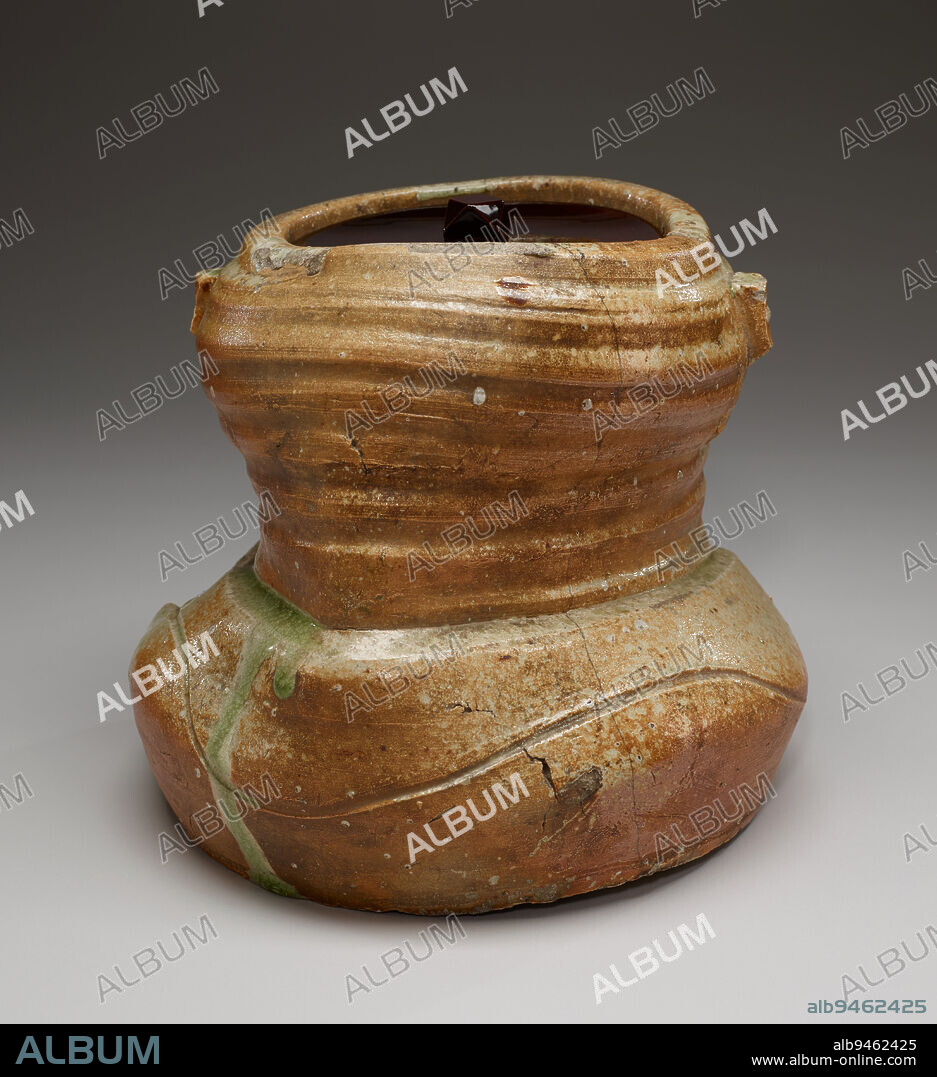alb9462425
Burst bag' Freshwater Jar, late 16th - early 17th century, Unknown Japanese, 8 1/4 × 8 11/16 × 8 11/16 in. (20.96 × 22.07 × 22.07 cm), Iga ware; stoneware with natural ash glaze; lacquer cover, Japan, 16th-17th century, Fittingly named 'Burst Bag' (Yaburebukuro) by a previous owner, this water jar (mizusashi) epitomizes the purposeful rusticity admired by masters of the Japanese tea ceremony during the 1500s. The potter left the marks of his hands and fingers as he created the form on the wheel and made deep irregular incisions to augment the vessels dramatic shape. The jar was fired for between seventeen and seventy days, further deforming the vessel and leaving scorch marks and cracks that interact visually with vitreous green ash glaze.

|
Ajouter à une autre Lightbox |
|
Ajouter à une autre Lightbox |



Avez-vous déjà un compte? S'identifier
Vous n'avez pas de compte ? S'inscrire
Acheter cette image

Légende:
Voir la traduction automatique
Burst bag' Freshwater Jar, late 16th - early 17th century, Unknown Japanese, 8 1/4 × 8 11/16 × 8 11/16 in. (20.96 × 22.07 × 22.07 cm), Iga ware; stoneware with natural ash glaze; lacquer cover, Japan, 16th-17th century, Fittingly named 'Burst Bag' (Yaburebukuro) by a previous owner, this water jar (mizusashi) epitomizes the purposeful rusticity admired by masters of the Japanese tea ceremony during the 1500s. The potter left the marks of his hands and fingers as he created the form on the wheel and made deep irregular incisions to augment the vessels dramatic shape. The jar was fired for between seventeen and seventy days, further deforming the vessel and leaving scorch marks and cracks that interact visually with vitreous green ash glaze.
Personnalités:
Crédit:
Album / quintlox
Autorisations:
Modèle: Non - Propriété: Non
Questions sur les droits?
Questions sur les droits?
Taille de l'image:
5230 x 5717 px | 85.5 MB
Taille d'impression:
44.3 x 48.4 cm | 17.4 x 19.1 in (300 dpi)
Mots clés:
 Pinterest
Pinterest Twitter
Twitter Facebook
Facebook Copier le lien
Copier le lien Email
Email
